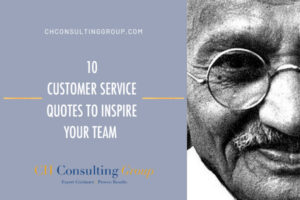Last week I wrote about the importance of creating robust RFP’s. Considering the feedback I got, a lot of you are creating a lot of RFP’s for a lot of projects. And although I didn’t delve into the particulars of what elements make up a sound RFP, I can tell you from experience there are some elements that routinely get overlooked.
When creating an RFP, most of the clients I work with have a firm understanding of basics such as project scope and requirements, process, timelines, pricing, etc. But I challenge you to also include the following elements as a way to get an even more effective, well-rounded RFP that will serve you well not only now, but for future projects as well.
The Organization
It’s important to understand the history of the vendor organization in order to determine their fit as a partner with your business. Specifically, do they have the scope and stability for a long-term relationship? A good RFP includes general company facts such as how long they have been in business, how many employees and clients they have, but it also should include questions like the average length of client relationships, five largest clients, mission statement, culture and values, etc.
Project Management
This is an important area that is often overlooked or not given enough time and attention. The RFP needs to help you determine if you will have access to the right people throughout the project and that those individuals mesh with your internal team. You’ll want to get general information on project managers, such as how much of their time will be committed to your specific project and a description of their governance model and details on senior management involvement on your account. In addition, consider what’s important to you in terms of past vendor relationships. What went well? What could have been better? If you are outsourcing for the first time, you’ll want to mirror your internal operations and project management with that of your outsourced vendor.
Technology
Don’t be shy when it comes to detailing your current technology and integration needs. I have worked with businesses hesitant to broach the topic because they don’t want to be “sold” on “extras” vendors may offer. Two things: if you are heavily invested in your current technology, or are under contract and can’t change systems for a host of reasons, a good partner will work with you on the best way to integrate their service or product. Secondly, maybe this is the time to look at larger technology solutions. If you are already looking for new products, that means you have pain. Be open to exploring this during the RFP process, but above all, know that whatever you decide, your vendor should make it as seamless as possible to integrate new capabilities with current systems.
Pricing
I know I mentioned above that this is one of the basics of a quality RFP, but it’s been my experience that pricing models can derail the RFP process. It’s important to communicate what economic model you prefer, such as cost per call, cost per minute, cost per headcount, etc. In addition to asking for itemized startup and ongoing costs, include questions about volume discounts and guarantees, long distance costs and the possibility of sharing startup costs.
If all of this makes you break out in a cold sweat, please contact me today so we can discuss ways I can help. CH Consulting has years of RFP experience, and we welcome the opportunity to help businesses like yours make the best possible vendor and outsourcing decisions based on your specific needs.



